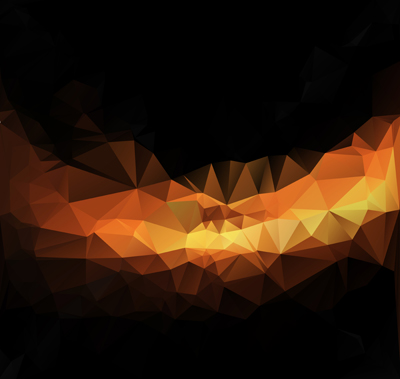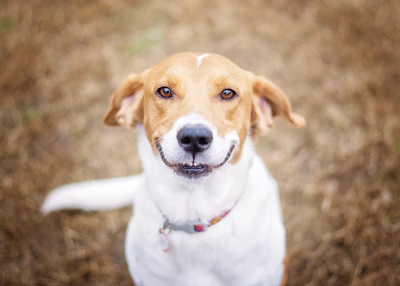
|
While out walking the other day I saw a seed pod that had fallen from the chestnut tree overhead onto the sidewalk, had been crushed, and dried out. And that got me thinking: whatever new and useful mutations that seed might have contained were now wasted, dismissed by evolution in a random event, by sheer bad luck, for failure of germination.
And that seed represents all life everywhere in the universe. To paraphrase the Bible, some seed falls on good ground and thrives, some on barren ground and dies. To paraphrase the basic tenet of evolution: that which thrives and breeds, survives and directs the future; that which shrivels and dies, does not. The secret of evolution is that a thousand, a hundred thousand, maybe a million seeds from that one tree over its lifetime will fall to the ground; some might get random mutations, and others might not. But for most of them, it does not matter, because only a few of them survive and grow into another tall tree to continue the cycle. A million seeds, random mutation, random extinction, only one or two successes to shape the future.
The secret of evolution is that events indeed are random, but the direction is still purposeful: that which thrives, survives. Period, full stop. Existence rewards success with more existence, and improvement is its own reward, judged solely by the bearer’s ability to contribute to thriving and surviving.
From this we get not just bacterial mats, corals, mosses, and chestnut trees. We get butterflies, robins, hawks, and human beings. And on the way to those ends we get crayfish, dormice, and dinosaurs. And those are not the end of evolution at all, because humans, so far, have created the steam engine, internal combustion, radios, computers, and the first whiffs of artificial intelligence. We have cracked the code of DNA and are learning to repair our own selves and heal the world around us. With more to come. The advances come randomly, but the effect is purposeful.
This is something that the followers of creationism or “intelligent design” do not understand. They look at the structure of, say, the human eyeball, a self-adjusting camera built out of collagen, proteins, and colloids, and marvel at its complexity and its purposeful functioning. They believe that for something to have purpose, it must have been designed to achieve that end. Some greater intelligence must have thought out the structure in advance and then placed each fiber, each protein, just so as to create the effect of a working eyeball. They don’t see how random chance could have achieved this.
But two things, perhaps three, get in the way of their thinking. First, they don’t understand how long evolution has been working on eyeballs. The first eyes—or light-sensing nerve endings—date back to the Cambrian explosion, when single-celled life began forming collective beings with differentiated cells, about 540 million years ago. Since that time, eyes diverged between the compound, crystalline structures of the insects and single-focus, globular structures of the fish, which successively became the amphibians, reptiles, and the mammals that followed them. Half a billion years is a long time to experiment with light-gathering techniques.
And the core command of evolution governs the process. Mutations in the genes for eyes that improve light gathering, detection, and discrimination in the environment into which the individual is born will help it thrive and breed. Mutations which damage or deteriorate those functions keep it from thriving and breeding.1
When I was working at the biotech company, I learned about a technique called “directed evolution.” The scientists there were working on improving the function of their Thermus aquaticus (that is, hot water bacteria) polymerase, the molecule that zips along a single strand of DNA during replication and adds complementary bases (that is, A’s to T’s, C’s to G’s, and vice versa). Now, as one scientist explained to me, she had no idea how to improve the polymerase. She couldn’t design a better one, because we don’t really understand what drives it in the first place. But she had the DNA code for the polymerase molecule they were working with.
In the process of directed evolution, she copied the polymerase DNA a dozen or a hundred times. Then she made a random mutation somewhere in each of the samples. She used the altered samples to make new copies of the polymerase protein and tested those mutated proteins for function. Those that worked better than the wild-type protein that the company was currently using, she kept; those that worked no better or worked worked not as well, she discarded. From each of the slightly improved samples, she made a dozen or a hundred more copies and gave each of them another random mutation. Repeat and repeat: mutate, grow new proteins, test them; keep the successes and discard the failures—even if one of the samples that worked better in the first batch worked no better now or showed a slight decrease in function. Keep up the process a couple of dozen more times, and eventually she would get a polymerase that reliably worked better than the wild type.
The point is, this scientist did not have to design the DNA sequence that world work better. She did not have to plan out the mutations that would achieve it. She only had to arrange for sequential additions of random mutations and test each one under the rule that anything that succeeds survives, and anything that fails disappears. The test is fitness for a specific purpose. And sometimes it takes many iterations of testing and discarding to change the future.
The second thing that gets in the way of looking at evolution vs. intelligent design is that the followers of the latter look around and see the world in fixed form. They think horses have their present shape and function because there is something perfect and eternal about “horsiness,” which was Plato’s idea of an eternal prototype existing somewhere out in the cosmos. The horse eats grass and has a compact foot with a single, rounded hoof because it runs over solid ground, which that hoof can easily navigate, and that ground happened to be covered with rich grass. But early horses had toes, just like most tetrapod mammals, and only adapted to standing on a single, developed “finger” with a rounded “fingernail” because it found itself in a suitable environment over preceding generations. And the same with the horse eating the available grass as opposed to leaves or berries or other foods.
Life is change. That which adapts through mutation and selection of successful traits, survives and directs the future; that which fails to adapt, dies. Humans are also in a state of change. We will evolve eventually, especially if our environment changes slowly enough for random mutation to do its work.2 Or we might, through our own enhanced brains and understanding, take over our germline evolution and create new variants, perhaps even a new species, with a form and function, skills and traits, that our knowledge and foresight—or perhaps our ideologies—decide would be better.
But even then, we won’t become intelligent, designing gods, but more like random selectors, rolling dice and hoping for a better outcome. And in that case, a lot of our seeds will fall on barren ground.
1. Of course, the process is a bit more subtle and complex than that. Some mutations have no obvious immediate effect. For example, DNA’s three-base reading frame is structured—by random selection, of course—so that changing the third base pair (dubbed “the wobble”) does not always change the amino acid which the reading frame codes for. This has the effect of slowing the rate of effective mutations.
And then, not every amino acid compiled in a particular protein has a direct and immediate effect on that protein’s function. So some mutations wait in the cell’s DNA, dormant and unchanging, perhaps over generations, for the chance to meet up with another subtle mutation that may then, working together, affect form or function.
And finally, mutations that occur in the somatic cells—those out in the body of the organism—never get carried forward. It is only changes in the germline cells—those that are segregated early in the testes to become sperm and the ovaries to become eggs—that go on to affect future generations. But once an egg or sperm carries a mutation—and only if it happens to join with its opposite number to actually create new life—it propagates that mutation to all the cells in the new body. And some of those—perhaps in the eye tissue of our example—will either improve or damage the tissue’s function.
2. And if not, then study the dinosaurs.
